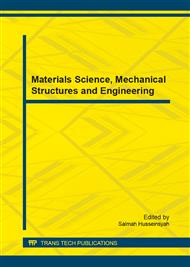p.206
p.210
p.216
p.220
p.224
p.228
p.233
p.237
p.241
An Experimental Study on the Cutting Forces, Surface Roughness and the Hardness of Al 6061 in 1D and 2D Ultrasonic Assisted Turning
Abstract:
The machinability of Al 6061 in 1D and 2D ultrasonic assisted turning (UAT) in terms of machining forces, surface roughness and hardness is investigated in this research. In order to perform the machining experiments, a 1D vibration tool and a 2D vibration tool are designed and manufactured. The cutting forces and surface roughness of the work-pieces in 1D UAT and 2D UAT are measured in different cutting speeds and feed rates and compared with that in conventional machining. To investigate the effect of the ultrasonic vibration on the material properties, hardness tests are performed on the work-piece material and micro-hardness tests are carried out on the chip specimens. The results showed that reduction in the cutting forces occurred in UAT. The results also showed that the surface roughness is exceled in UAT in comparison with the conventional machining. While no detectable effect of the ultrasonic vibration on the work-piece material could be observed, the chip micro-hardness experiments showed that the softening phenomenon occurred in UAT, which can be the cause of the force reduction in UAT.
Info:
Periodical:
Pages:
224-227
Citation:
Online since:
October 2014
Authors:
Price:
Сopyright:
© 2014 Trans Tech Publications Ltd. All Rights Reserved
Share:
Citation:


